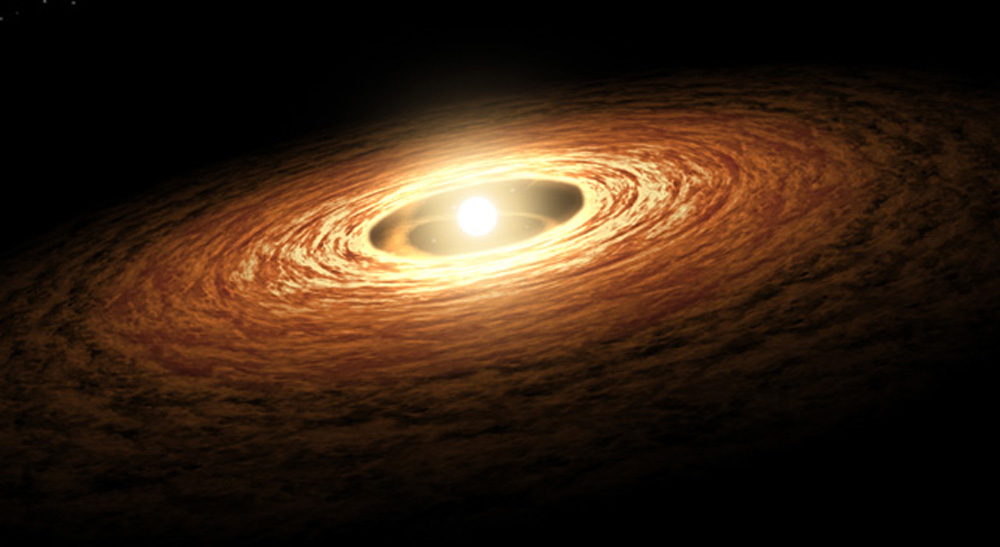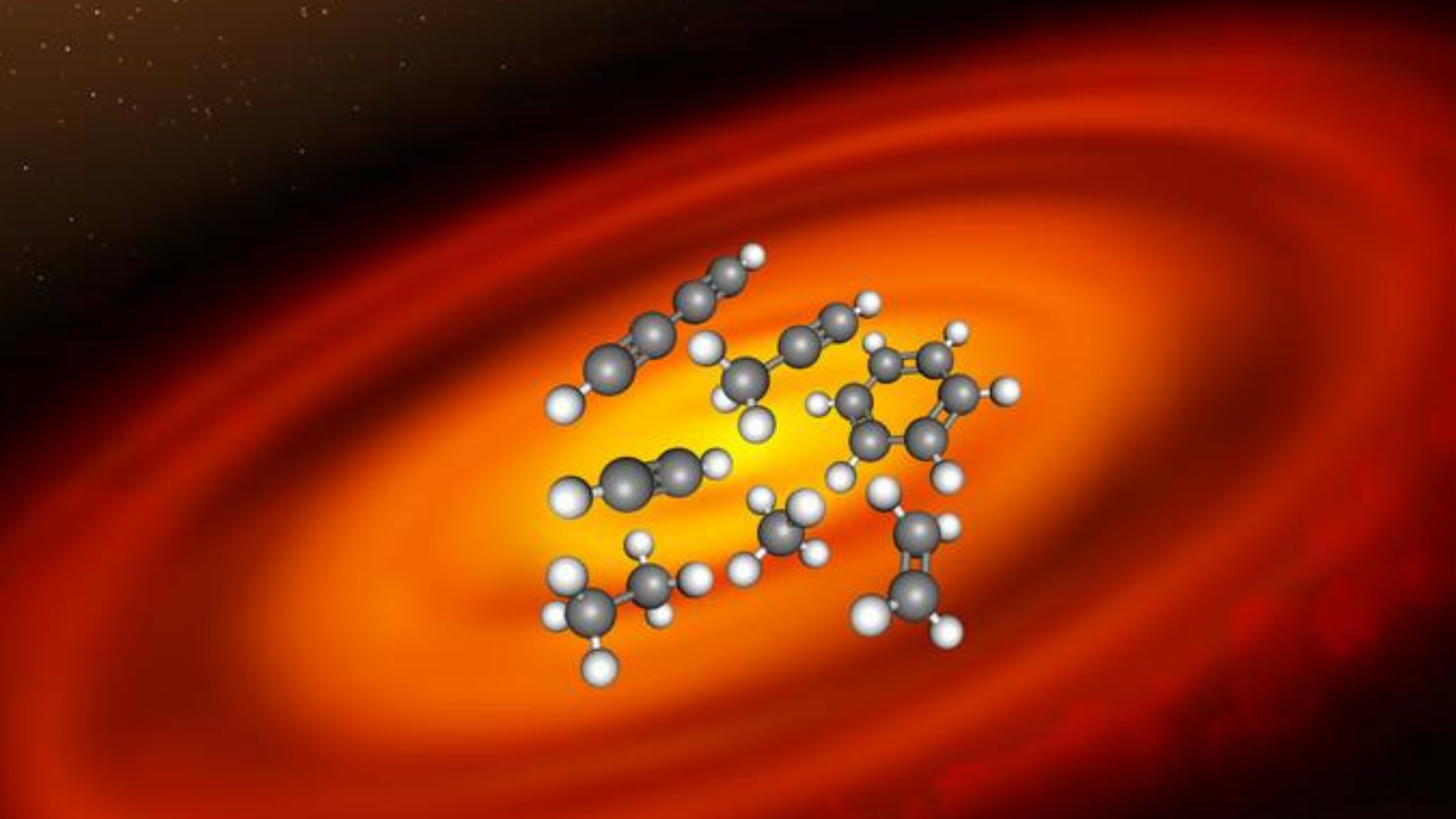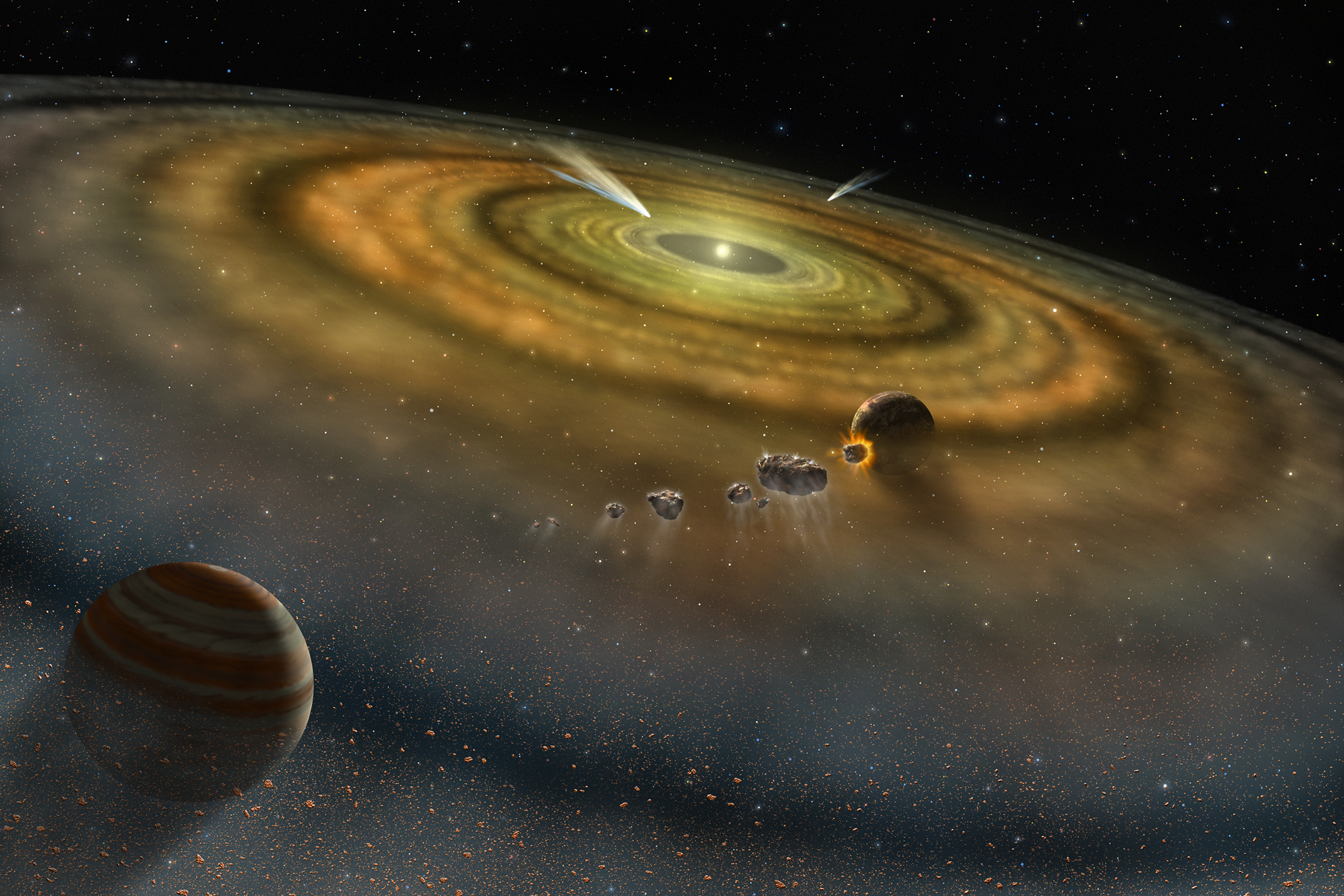Rocky, carbon-rich exoplanets more likely around tiny stars, James Webb Space Telescope reveals
"This is profoundly different from the composition we see in disks around solar-type stars."

Using the James Webb Space Telescope, astronomers have discovered the richest "menu" of hydrocarbons ever seen in a planet-forming disk. This observation, which involved the protoplanetary disk around a tiny star, also revealed the first detection of ethane outside the solar system.
The discovery was made when the Mid-Infrared instrument (MIRI) on the James Webb Space Telescope (JWST) investigated the object "ISO-ChaI 147" as part of the Mid-Infrared Disk Survey (MINDS). ISO-ChaI 147 is a young star located in the Chameleon I star-forming region of around 237 stars. This region is located around 600 light-years away.
These JWST observations of ISO-ChaI 147 imply the protoplanetary disks of tiny stars are more efficient at forming smaller, Earth-like planets than they are at birthing vastly larger, Jupiter-like gas giants. Thus, as low-mass stars are more common than larger stars in the Milky Way, there may be more terrestrial planets in our galaxy than previously suspected.
The findings also show that the planet-birthing clouds of gas and dust surrounding tiny stars are built differently — at least, chemically — from those around stars about the size of the sun and larger. The different chemical menu around these relatively small stars may mean their rocky planets have very different atmospheres than that of Earth.
Related: Rogue planets may originate from 'twisted Tatooine' double star systems
ISO-ChaI 147's mass is just over 10% that of the sun, and it is surrounded by a protoplanetary disk with carbon-rich chemistry featuring 13 carbon-bearing molecules, including ethane and benzine. However, the abundance of oxygen-bearing molecules in this disk is very low.
"This is profoundly different from the composition we see in disks around solar-type stars, where oxygen-bearing molecules such as water and carbon dioxide dominate," Inga Kamp, team member and a researcher at the University of Groningen, said in a statement.
Get the Space.com Newsletter
Breaking space news, the latest updates on rocket launches, skywatching events and more!
The MINDS team thinks this shows the material is transported radially through the protoplanetary disk of ISO-ChaI 147, thus impacting the bulk composition of any planets forming within the disk.

What does this mean for exoplanet-hunting?
Stars are born when massive clouds of gas and dust develop overly dense patches that eventually collapse under their own gravity. This process doesn't utilize all that material, however, which leads to infant stars being surrounded by swirling and flattened clouds of gas and dust called protoplanetary disks. When patches of matter in this disk condense, planets emerge — that's what happened around our infant sun around 4.6 billion years ago.
The amount of material in a protoplanetary disk and how that gas and dust is distributed places a limit on how many planets a star can host, as well as what building blocks those planets can be supplied with. The JWST ISO-ChaI 147 results indicate this protoplanetary disk is better suited to birthing smaller rocky planets rather than larger gas giants.
Because the environments in protoplanetary disks determine the conditions in which new planets form, the finding that disks surrounding very low-mass stars evolve differently than those around more massive stars has potential implications for finding rocky planets with Earth-like characteristics. However, tiny stars could host planets that are like Earth in many ways, but radically different in others.

"Many primary atmospheres of those planets will probably be dominated by hydrocarbon compounds and not so much by oxygen-rich gases such as water and carbon dioxide," Thomas Henning, MINDS team leader and a researcher at the Max Planck Institute for Astronomy (MPIA), pointed out in the statement. "We showed in an earlier study that the transport of carbon-rich gas into the zone where terrestrial planets usually form happens faster and is more efficient in those disks than the ones of more massive stars."
The reason for the carbon and oxygen imbalance between protoplanetary disks of stars with different masses is not currently understood. For instance, it could be the result of disks around smaller stars being enriched with carbon, or from them being depleted of oxygen.
If the former is true, that would mean carbon enrichment can happen as solid particles in the disk are stripped of their carbon content. That content would be released as gas. These carbon-deprived solid particles would go on to form planets with rocky bodies that are carbon-poor. Yet, the atmospheres of these worlds would be carbon-dominated due to an excess of carbon gas in the environment in which they are born. Thus, these rocky planets around tiny stars would ultimately be carbon-rich — and quite different from Earth.
Research leader Aditya Arabhavi, also of the University of Groningen, added that these findings were made possible by the JWST's unique position around a million miles (1.6 million kilometers) from Earth.
"These observations are not possible from Earth because the relevant gas emissions are absorbed by its atmosphere," Arabhavi said. "Previously, we could only identify acetylene emission from this object. However, JWST's higher sensitivity and the spectral resolution of its instruments allowed us to detect weak emission from less abundant molecules."
The MINDS crew now intends to investigate more protoplanetary disks around low-mass stars. This will help us determine how common exotic, carbon-rich terrestrial planet-forming regions like that of ISO-ChaI 147 actually are.
"Expanding our study will also allow us to understand better how these molecules can form," Henning concluded. "Several features in the data are also still unidentified, warranting additional spectroscopy to interpret our observations fully."
The team's research was published on Thursday (June 6) in the journal Science.
Join our Space Forums to keep talking space on the latest missions, night sky and more! And if you have a news tip, correction or comment, let us know at: community@space.com.

Robert Lea is a science journalist in the U.K. whose articles have been published in Physics World, New Scientist, Astronomy Magazine, All About Space, Newsweek and ZME Science. He also writes about science communication for Elsevier and the European Journal of Physics. Rob holds a bachelor of science degree in physics and astronomy from the U.K.’s Open University. Follow him on Twitter @sciencef1rst.









